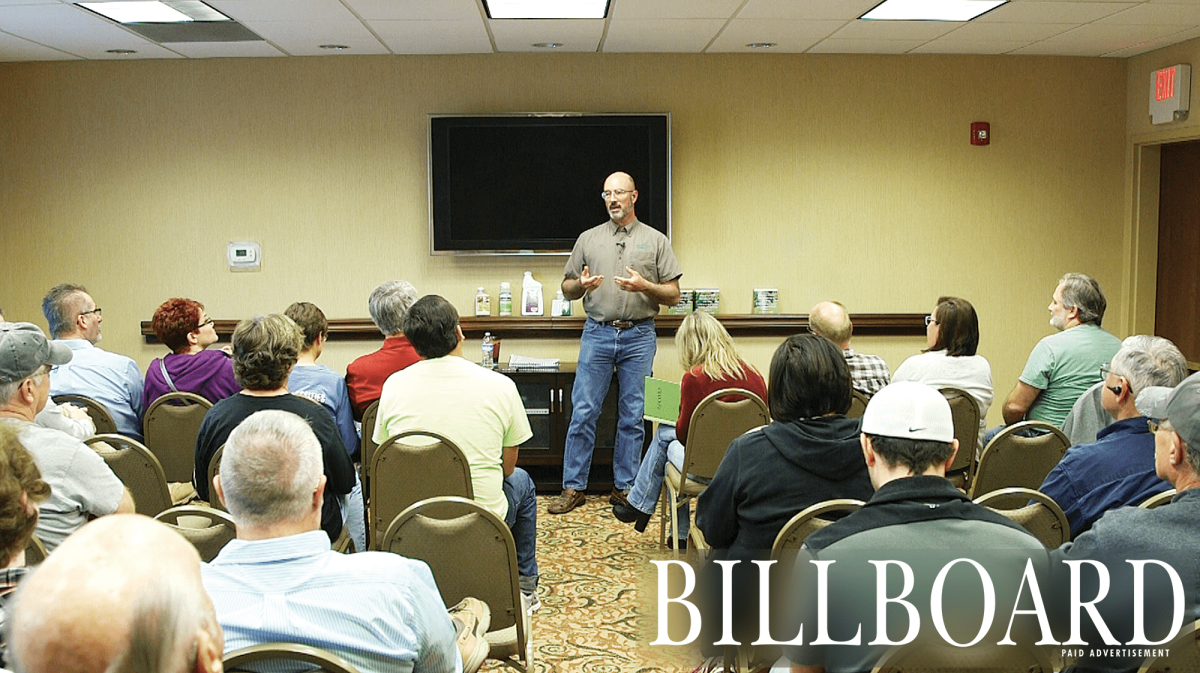LOCAL LAWN EXPERT SKIP ORTH ADVISES HOMEOWNERS ON HOW TO KEEP FROM REPLACING THEIR LAWN EVERY SEVEN YEARS

Skip says “Many times when I speak with home owners regarding their declining lawn, they will say something like ‘Well, this yard is 8 years old. I know grass doesn’t last much longer than that down here. I guess it’s time to replace it.’ It is true that sometimes lawns do need to be replaced, however there are things you can do for your lawn that will help it to last indefinitely.”
AVOID OVER MAINTENANCE
According to Skip, one of the biggest reasons that lawns decline and need to be replaced is over maintenance with too much water and fertilizer. This is especially true for centipede lawns. Centipede grass is not meant to be a “trophy lawn” – lush and thick. It does best when it is maintained with a minimal amount of water and fertilizer. When grass is over watered and fertilized, it develops too much top growth or “thatch.” Thatch causes a number of problems including disease, insect activity and shallow root growth, all of which will eventually lead to decline.
DON’T LISTEN TO THE FERTILIZER MANUFACTURERS
Part of the problem of over-maintaining lawns comes from the unrealistic expectations and promises made by name brand fertilizer companies. Skip states “Some of the advertising material I’ve observed in local Big Box Stores advocates fertilizing your lawn up to 4 times in a growing season using their products. This is way too much and will quickly lead to the lawn being over stimulated, having too much top growth with too few roots and eventually falling into decline.”
WATER SPARINGLY
Giving your lawn too much water will have a similar effect as over fertilizing. Watering the lawn every day or even more than once a day will stimulate top growth and cause the root system to remain shallow because there is always moisture available in the first few inches of soil. Spacing out irrigation every few days allows the soil to begin to dry out, which will stimulate deeper root growth.

PERIODICALLY DETHATCH
Even with proper maintenance practices, most lawns may eventually develop too much top growth. When lawns get in this condition, dethatching is necessary to thin out the turf again by removing a portion of the runners in the lawn, reducing its density. The best way to dethatch a lawn is to use a power dethatcher. Tow behind dethatchers that are pulled by lawn tractors don’t do a good job at extracting enough thatch from the yard. A power dethatcher is about the size of a push mower and has small blades that spin vertically, removing excess top growth as you go over the lawn.
TOP DRESS WITH SAND
Once the dethatching process is complete, top dressing the lawn with about 1/2 inch of sand will stimulate the grass to recover and even out the surface of the lawn. Sand is better than top soil for a couple reasons. First, top soil may carry many weed seeds that would be introduced into your lawn. Second, University of Florida studies have found that the “good stuff” or organic matter in top soil actually filters down through our sandy soil past the grass root zone in just a matter of months after being applied, so you get no long-term benefit from using top soil instead of sand.
Another benefit from top dressing is covering root competition from trees that are in or near the lawn. Over time, tree roots invade soil space occupied by the grass and can create a thick mat of fibrous roots that is almost impossible for the grass to compete with. Top dressing provides a little extra free soil space for the grass roots to thrive in.
By following proper maintenance practices and periodically reducing the density of your lawn with dethatching and top dressing, it should last a lifetime without being replaced!
Are you having problems keeping your lawn healthy? Skip offers FREE LAWN CONSULTATIONS! Calling or text Father and Son Pest and Lawn Solutions at 850-240-7935 to set up a free lawn consultation. Or visit their website at www.fatherandsonlandscape.com







